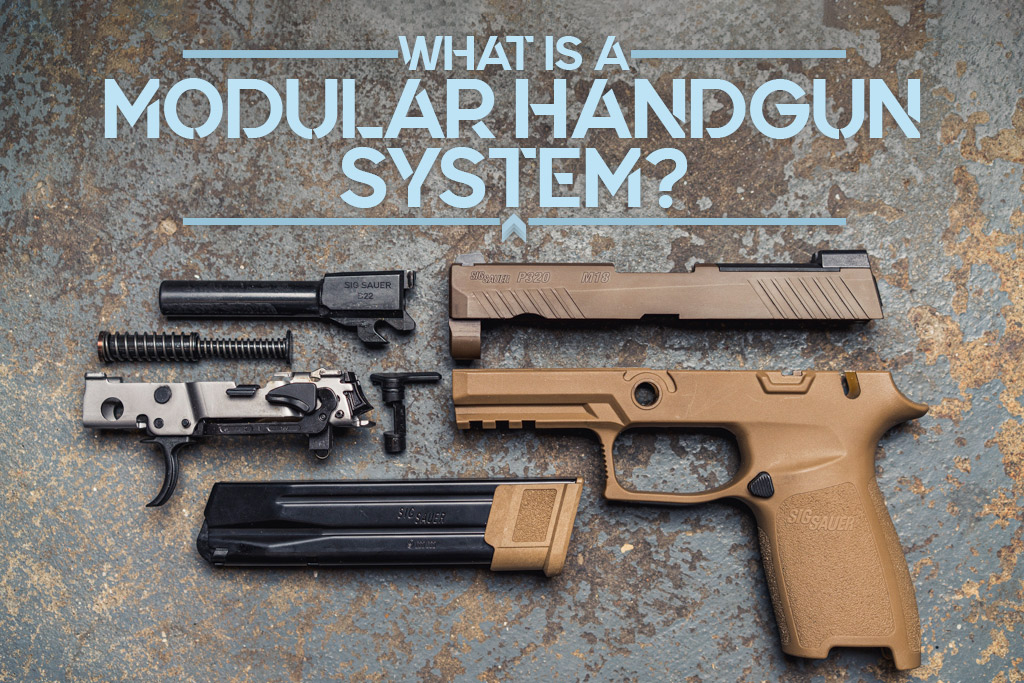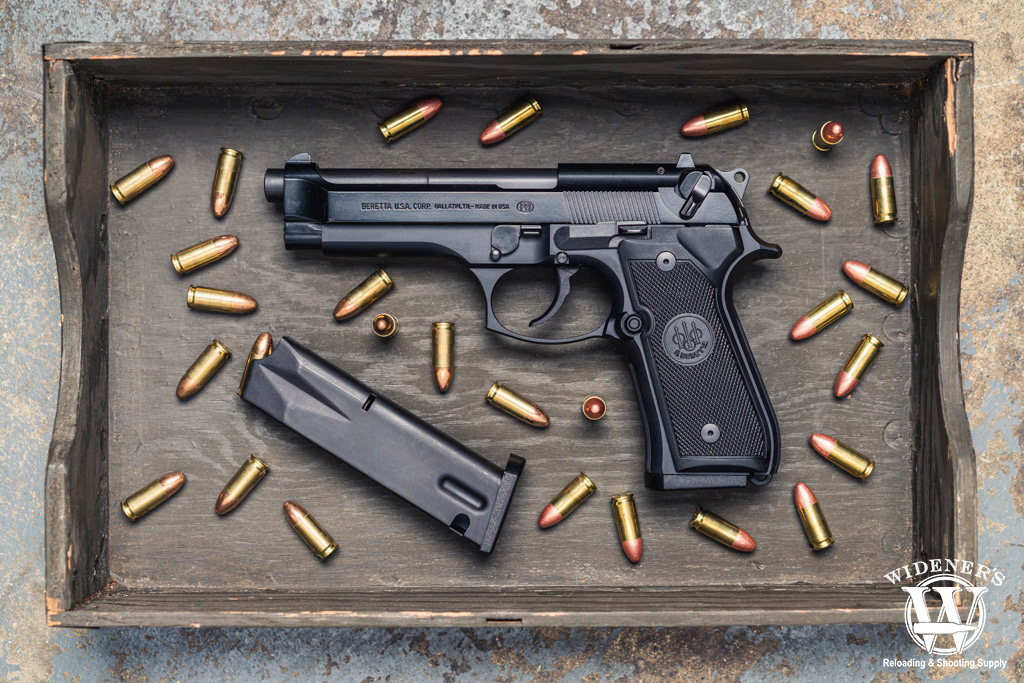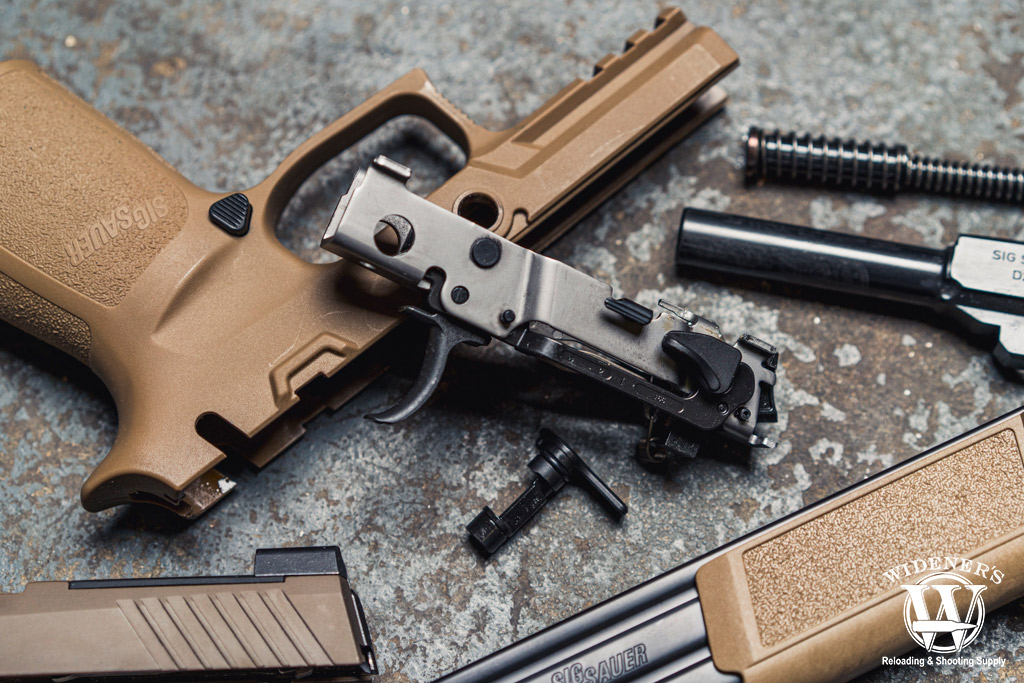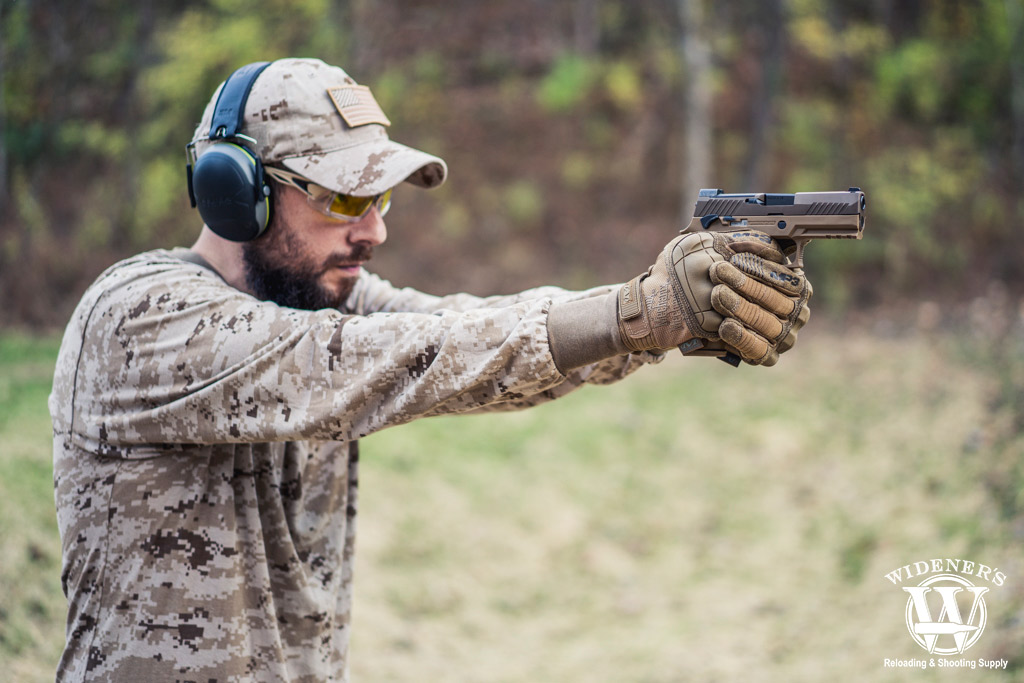

The Modular Handgun System (MHS) is likely familiar to anyone who pays attention to firearm trends. This guide will shine some light on the meaning of modular handgun systems while also discussing how this idea has evolved and what it means for the future.
The idea for a “Modular Handgun System” came from the Army and the Airforce when they began looking for a sidearm to replace the Beretta M9. In many circles, the Modular Handgun System refers specifically to the military’s M17 and M18; however, it has also taken on a broader meaning.
Modular Handgun Systems have evolved to incorporate a new type of sidearm that you can easily alter for the task at hand. Below, we’ll dive into some history, look at a few MHS examples, and talk about why modularity has made such a bang in the firearm community.
The History of the Modular Handgun System

The Beretta M9 served as the U.S. Military’s standard service pistol from 1985-2017.
The military began looking for a sidearm to replace the M9. The term “Modular Handgun System” developed in part because of the program that received sidearm submissions from firearms manufacturers worldwide. The military had many requirements for the pistols, including high capacity, detection avoidance, and, you guessed it – modularity.
Ultimately, SIG won the contract with the SIG p320 as the basis for the 9x19mm chambered M17 and the more compact M18. The M17, aka the MHS M17, embodies the military’s goal of a truly modular sidearm.
However, “Modular Handgun System” has become more than just a military program. Yes, the military may have been the genesis of the MHS, but the idea of a modular handgun system has evolved to encompass a new breed of handguns.
Let’s look at a few examples of modular handguns, how they work, and what they do.
Examples of Modular Handgun Systems
As you’ll see, we’re taking the term “Modular Handgun System” and applying it beyond the military program.
One way of understanding what we mean by a modular handgun system is to consider the related term, “Modular Weapons System.” A modular weapons system can conform to the mission at hand. You can understand a modular weapon, or a modular handgun, by focusing on the word “modular.” It’s related to “modules” (separate parts), or the more relaxed term “mods” to mean modification.
In a broad sense, the modular handgun system is about quickly and safely altering the pistol to make it more effective. There are other nuances as well, specifically when it comes to serialization. Most modular handguns are stamped on the weapon’s removable chassis. This is a departure from serializing the weapon’s frame, which has been a standard for decades.
Here are three examples of modular handguns:
- SIG P320/M17
- Beretta APX
- Zev Tech O.Z-9
Let’s take a closer look at each of these firearms.
The SIG P320/M17
This is the most shining example, since the SIG p320 was the winner of the military’s program, probably because it’s one of the most modular systems in circulation.
In the SIG p320, the firing control unit (or FCU) is the serialized part of the gun, which means this portion of the weapon can be easily removed from the firearm and be placed in a new frame and slide – without needing to build an entirely new gun.
Beretta APX
Another example of a modular handgun, the Beretta APX allows the user to remove the central firing control unit or chassis from the frame (grip) of the gun. You can do this by removing a few pins in the frame, requiring no professional gun-smithing.
As this video from Beretta on the APX points out, the ability to customize grips has a practical application. It can prevent confusion between guns that look the same but have different calibers.
Zev Tech O.Z-9
Finally, we have the Zev Tech O.Z-9. Like the last handguns mentioned, this firearm is fully modular with a removable firing control unit. You can easily change sights, grips, and slide length. The Zev Tech is a high-end modular handgun with a Glock-like design.
Now that we’ve seen some examples, let’s discuss how modular handguns work and why they’re popular.
How Modular Handgun Systems Work

The chassis in a modular handgun system is removable, it’s also commonly serialized instead of the gun’s frame.
In short, a modular handgun allows the user to customize the firearm without time-consuming or costly gunsmithing. What types of modifications are we talking about, and why does it matter? Let’s explore a few common firearm modifications and how they serve the shooter.
Reasons to have a modular handgun vary, but are typically for the person, the mission, or ease of repair.
Now, let’s look at these reasons a bit closer.
Firearm Modifications for the Person
The most common modification for any firearm is one for the needs of the shooter. This means changing the gun to suit their specific requirements – sometimes, these are practical, and sometimes they’re preferences.
For example, the grip is a practical change. Some shooters will have smaller or larger hands, requiring an altered grip. This is one reason many sidearms come with replacement backstraps.
As for a preference example, take the sights. Some shooters may prefer a different type of sight or mounted optic, and being able to change a sight easily is part of a streamlined modification.
Handgun Modifications for the Mission
Another type of modification is less about the shooters’ personal needs and more about the conditions of the mission. There are noticeable changes to the firearm, such as adding night sights, lights, or extended magazines, but there are also more drastic changes.
Some pistols are designed for the shooter to easily change the entire grip, allowing them to go for something larger or smaller depending on the mission.
Handgun Modularity for Simple Repair and Maintenance
Finally, modular handguns have become popular for their ease of maintenance. It’s easier to repair and replace parts on a modular pistol, since each piece is already designed for fast removal. In a combat situation, the ability to fix a handgun rapidly and efficiently is invaluable.
Before we go, let’s talk about what might be in store for modular handgun systems in the coming years.
Final Take: The Future of Modular Handgun Systems

Modular Handgun Systems are the future of semi-automatic handguns, expect to see more of them on the market soon.
When reading about the military’s decision to update the Beretta M9, it’s clear that they didn’t just want to replace an old firearm. They wanted to make a significant jump into modernizing the US Military’s weapons system.
Some people have doubts that this latest modularity trend will stick around. While some trends come and go, given the military’s adoption and championing of modularity, we’ll likely see more modular firearms before we see less of them.
What do you think? Have you been impressed with the latest modular weapons? If you’re interested in learning more about the mechanics of firearms, check out our guide on the difference between carbines and rifles.


